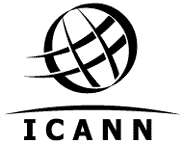Publications
Use the filters below to narrow publications by offices, programs or categories
Land Mobile Spectrum Planning Options
PRIVACY AND SELF-REGULATION IN THE INFORMATION AGE
A report containing a collection of papers from recognized experts that explore the extent to which industry self-regulation can be effective in reducing the risks information technologies pose for individual privacy. The papers address the benefits, challenges, and limitations of self-regulatory privacy regimes.
Table of Contents
Contributing Authors and Acknowledgements
Chapter 1: Theory of Markets and Privacy
Elements of Effective Self-Regulation for Protection of Privacy - Discussion Draft
NTIA and the Department of Commerce have released a Discussion Draft, "Elements of Effective Self-Regulation for Protection of Privacy." The document outlines preliminary views on self-regulation and the actions that the private sector can take in order to meet an acceptable level of privacy protection.
As set forth in A Framework for Global Electronic Commerce, the Clinton Administration supports private sector efforts to implement meaningful, consumer-friendly, self-regulatory regimes to protect privacy.
Falling Through the Net II: Accompanying graphs and charts
Falling Through the Net II:
Accompanying graphs and charts
Chart 1: Percent of U.S. Households with a Computer, Modem,
Telephone, and E-mail
FALLING THROUGH THE NET II: NEW DATA ON THE DIGITAL DIVIDE
FALLING THROUGH THE NET II:
NEW DATA ON THE DIGITAL DIVIDE
Second Status Report to the Department of Commerce (ICANN)
 |
Second Status Report Under ICANN/US Government Memorandum of Understanding (30 June 2000) |
|
|
| ||
U.S. Spectrum Management Policy: Agenda for the Future
NTIA has posted its comprehensive 1991 spectrum policy study, "U.S. Spectrum Management Policy: Agenda for the Future", which still serves as a resource for understanding spectrum management issues.
US SPECTRUM MANAGEMENT POLICY
U.S. Spectrum Management Policy:
Agenda for the Future
1991
TABLE OF CONTENTS
I. Overview
A. General
B. Objectives of Spectrum Management
Safety Nets: Protecting Lives and Property in the Information Age
Safety Nets is the third in a series of reports from NTIA tracking the impact of telecommunications and information technology on Americans today. Safety Nets describes how new technologies are changing the face of public safety. Of all professions, the public safety sector requires fast and accurate communication.
